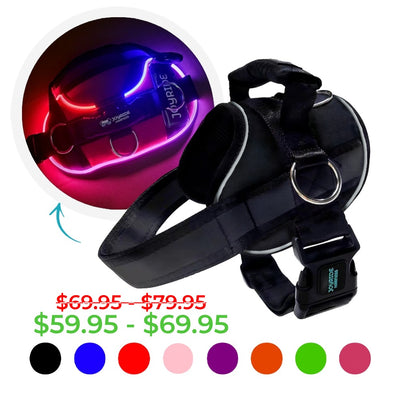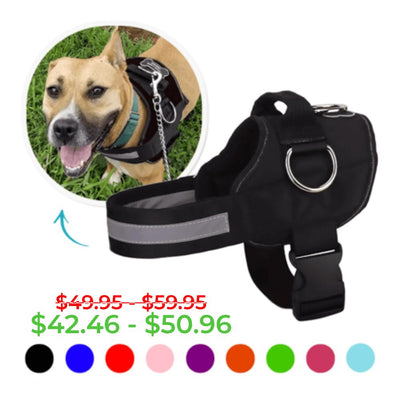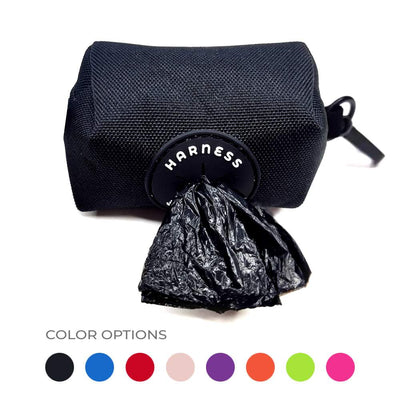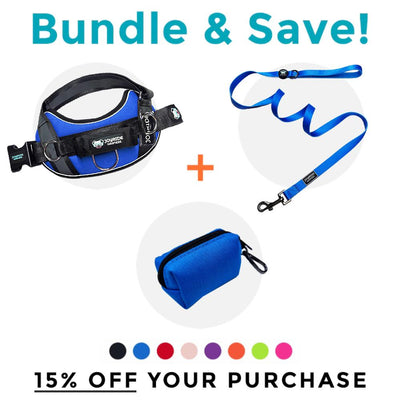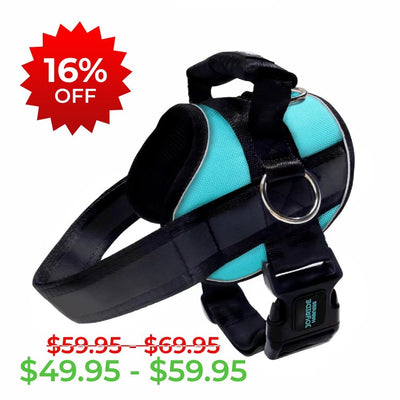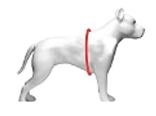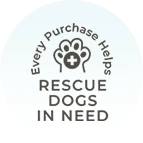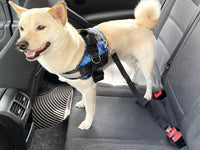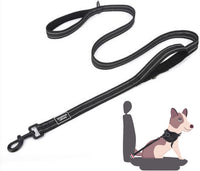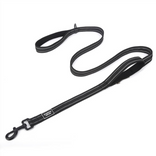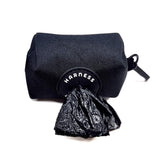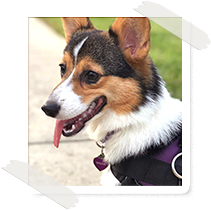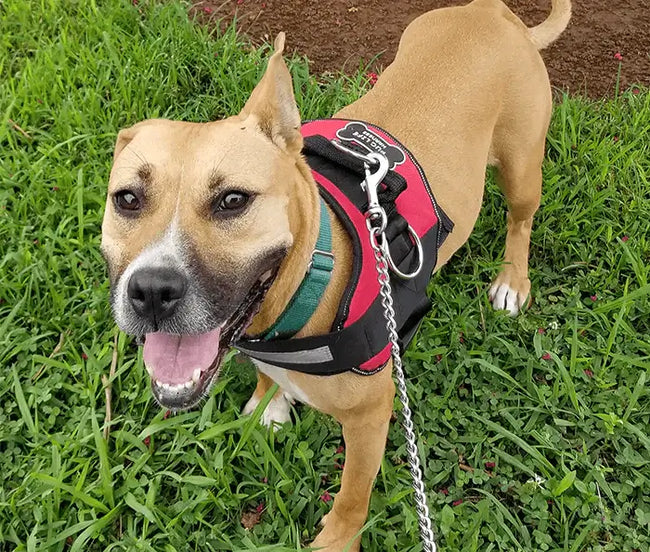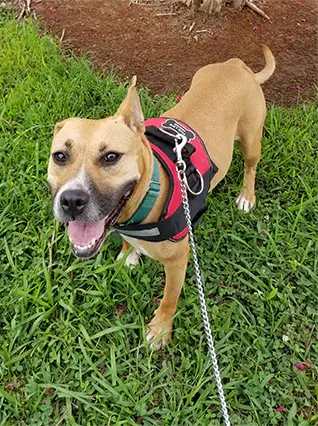Everything You Need to Know About Being a First-Time Dog Owner
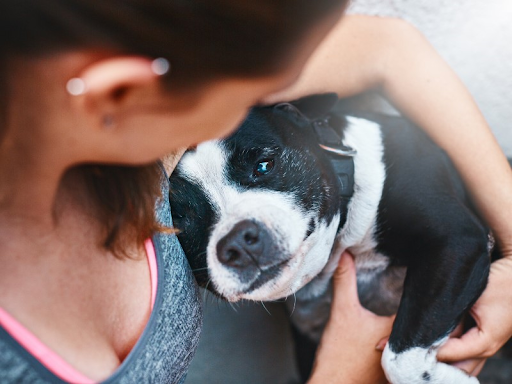
Welcoming a furry friend into your life is one of the most rewarding decisions you can make. The joy, companionship, and unconditional love a dog brings are unparalleled. But, just like any significant life choice, becoming a dog owner, especially for the first time, comes with its own challenges and responsibilities.
From selecting the right breed to understanding their nutritional needs, there's much to consider and learn when becoming a new pet parent. The right preparation sets you up for success in many things, and bringing home a new furry companion is no different. At Joyride Harness, we love pets and their pet parents, which is why we put together this guide on everything you need to know about being a first-time dog owner.
Whether you dream of peaceful walks at your favorite dog-friendly trail or playful afternoons in the park, preparation is key to ensuring a harmonious relationship with your new pet. Our goal is to equip new dog owners with the essential knowledge to embark on this beautiful journey together. Are you excited to bring home your new companion? Here’s everything you need to know to get you started as a new dog pawrent!
Choosing the Right Dog
One of the most important considerations for new dog owners is finding the right dog. Selecting the perfect canine companion is about more than just falling in love with a pair of puppy eyes. It's a decision that will impact your life for many years. It’s a lot like finding a new roommate: you want someone who compliments your lifestyle, living space, and personal preferences.
Not everyone cares about whether their dog has a fancy pedigree, but purebred or not, the best way to ensure success for you and your new dog is to figure out what you want–and don’t want–in your new companion. Here are some things to consider when looking for the best dog as a first-time dog owner:
1. Size of the Dog
For some dog lovers, it’s go big or go home. For others, smaller is better. Generally speaking, adult dogs can range anywhere from one pound to over two hundred pounds, so there is a lot of size variation among breeds!
The size of your living space might dictate your size requirements. For instance, some apartments or communities have weight restrictions on what size dog you can have. It can also come down to practical lifestyle choices. If you travel frequently and plan on bringing your dog with you, you may want to stick to a smaller dog that can fit in a carrier under your airplane seat.
Don’t forget that a dog’s size also affects other factors such as food consumption and potential health issues. When it comes to large and giant breeds, you can expect to spend more money on just about everything, including food, grooming, and vet care. Just remember that size doesn’t always dictate energy level—some small breeds are incredibly active!
2. Energy Level
Speaking of energy level, this is another important consideration for choosing the right dog, especially when it’s your first time. Some dogs have an insatiable need for activity, while others are content with short walks and long naps. When it comes to owning a dog for the first time, assess your own activity level and be honest with yourself. This will only benefit you and your pup!
For example, if you're an avid runner, a more energetic breed might be a perfect companion. Maybe a Border Collie or a Dalmatian. On the other hand, if you're looking for a more laid-back pet, breeds known for their calm demeanor might be more suitable. If you’re looking for a couch potato dog, limit your searches to lower-energy breeds, such as a Pug or even a Great Dane.
3. Grooming Needs
Just as sizes can significantly vary among different dog breeds, so can grooming requirements. Some dogs shed minimally and need regular grooming sessions, while others might shed more but require less frequent grooming. Labs, for instance, are known to shed two times a year: once for six months, and then again for six months. The benefit is that their coat is wash and wear, meaning all they need is some brushing and bathing every now and then.
On the opposite side of the dog maintenance coin are haired breeds, such as Poodles. While you won’t find nearly as much dog confetti around your home with a low-shedding breed, their high-maintenance coats have higher grooming needs. In this case, you will need to take your dog to a groomer or learn to groom them at home and follow a regular schedule. Be sure to factor in the time and cost of grooming when making your decision!
4. Temperament
Just like people, every dog has its own personality. However, certain breeds have general temperament traits making them better options than others. Some dogs are naturally more sociable, while others might be more independent or even aloof.
Some breeds, like Golden Retrievers, are considered great family dogs because of their happy, loving nature. Many Goldens have never met a stranger and love everybody. Shiba Inu, on the other hand, are deeply loyal to their family but are aloof with strangers.
Consider what temperament will mesh well with your household, especially if you have other pets or children.
Best Dogs for First-Time Owners
For those new to the canine world, some breeds are particularly forgiving and adaptable. Breeds like the Labrador Retriever, Golden Retriever, Poodle, and Bichon Frise are known for their friendly nature and versatility, making them excellent choices for first-time dog owners.
However, that’s not to say that first-time dog owners can’t excel with a more difficult breed! Ultimately it will come down to your lifestyle and dedication to training. Of course, sometimes we adopt a mixed-breed dog and have no idea what to expect regarding breed traits. And that’s OK! No matter what kind of dog ends up being your first, you will learn along the way. There are many free resources across the internet you can use to help you excel at being a new dog owner, no matter the breed!

How to Get a Dog
Once you’ve figured out what kind of dog would best suit your lifestyle and needs, you might wonder how to find a dog. Should you go to the shelter? Look for dogs online? Find a breeder? Go to a pet store?
There are many ways to get a new dog. However, there are two primary avenues we will explore: responsible breeders and rescues or shelters. Both paths have their merits, and the choice ultimately depends on your personal preferences and circumstances. Here’s what you need to know about each so you can make an informed decision.
Responsible Breeders
How to Identify a Responsible Breeder: A reputable breeder prioritizes the health and well-being of their dogs. They'll have comprehensive knowledge about the breed, provide medical histories, and often raise the puppies in a home environment. They'll also be involved in breed clubs and organizations, showcasing their commitment to the breed's betterment.
Questions to Ask a Breeder:
- What are the health screenings and tests done on the parents?
- How are the puppies socialized?
- Can I meet the puppy's parents?
- What is your experience and history with this breed?
- What kind of environment are the puppies raised in?
Red Flags to Watch Out For:
- Breeders who have multiple litters available at once or breed multiple types of dogs.
- Unwillingness to show you where the dogs live or meet the puppy's parents.
- No references from previous buyers.
- Lack of veterinary records or health guarantees.
Rescues and Shelters:
If you’re not looking for a specific breed or are perhaps looking to bring home an adult dog versus a puppy, adopting from a shelter or rescue is a great way to find your next best friend. Even if you are interested in a particular breed of dog, you can find a breed-specific rescue for just about any breed.
Benefits of Adopting from a Rescue or Shelter:
- You're providing a loving home to a dog in need.
- Many shelter dogs are mixed breeds, which can often be healthier and have unique personalities.
- The cost of adoption usually includes initial veterinary care, including vaccinations and spaying/neutering.
- You're combating the issue of pet overpopulation.
Preparing for an Adoption Process:
- Research and visit multiple shelters or rescues to find the right fit.
- Understand the adoption requirements, including home visits, references, and fees.
- Be patient. The right dog might not be there on your first visit, but they could be just around the corner.
Supporting Local Shelters: Even if you decide to go with a breeder, consider supporting local shelters through donations, volunteering, or spreading the word. They play a crucial role in the well-being of countless animals!
In the end, whether you choose a breeder or a shelter, the goal remains the same: to provide a loving, forever home to a deserving dog. At Joyride harness, we believe every dog deserves care, love, and a happy home!

Training Your Dog
Once you’ve welcomed your new canine companion into your home, the next important step is training! This is important regardless of whether your new dog is a puppy or an adult. Proper training ensures that you will have a harmonious living situation; it also helps to create a stronger bond between you and your pup!
- Importance of Early Training: Just as with humans, early education is crucial for dogs. Puppies are like sponges, eager and ready to learn. Starting early can set the foundation for good behavior and make subsequent training more straightforward. It will also be beneficial to puppy-proof your home during the early training process.
- Basic Commands Every Dog Should Know: Commands like "sit," "stay," "come," "heel," and "leave it" are fundamental. They not only help in managing your dog's behavior but can also be crucial for their safety.
- Housebreaking Tips: Consistency is key. Set a regular schedule for potty breaks, praise your dog when they do their business outside, and be patient. Accidents will happen when potty-training, but with time and consistency, your dog will learn.
- Crate Training: A crate can be a safe haven for your dog. Start with short intervals, making the crate a positive space with toys and treats. Never use it as a punishment. Over time, your dog will learn to see it as their personal space.
- Positive Reinforcement: Positive reinforcement, like treats and praise, encourages good behavior by rewarding your dog for making the right choices. On the other hand, punishment can lead to fear and aggression. It's always better to reward the behaviors you want to see rather than punishing those you don't.
- Professional Training or Puppy Classes: When it’s your first dog, you may not have past experiences or knowledge to fall back on. If you're feeling overwhelmed or facing persistent behavioral issues, professional trainers or puppy classes can be invaluable. They offer structured environments for learning and socialization, benefiting both you and your dog. A good trainer will teach you just as much as they teach your dog!
Training is an ongoing process that requires time, patience, consistency, and love. But when you take the time to work with your dog, you will create a language through which you and your dog can understand and respect each other, creating a bond like no other.
Understanding Dog Nutrition
Navigating the world of dog nutrition can be daunting, even if you’re an experienced dog owner. With all the options available in stores and online, it’s easy for first-time dog owners to feel overwhelmed. We all want to feed our fur babies the best food possible, but with so many conflicting opinions, it can be difficult to understand what that even is.
First, it’s important to focus on proper nutrition. Just like us, dogs need a balanced diet to thrive. This includes proteins, fats, carbohydrates, vitamins, and minerals. A well-balanced diet supports growth, maintains a healthy coat, strengthens the immune system, and keeps the digestive system running smoothly.
When looking for a dog food, start by looking for the AAFCO (Association of American Feed Control Officials) statement, which ensures the food is nutritionally balanced. Next, you’ll want to make sure the formulation is suitable for your dog. You’ll find puppy, large breed puppy, adult, all life stages, senior, weight management… the list goes on and on. Puppies have different needs than adult dogs, who may have different needs than senior dogs. If you have any questions about choosing the right food for your new dog, consult your veterinarian!
Foods to Avoid
Dog food is formulated to meet the needs of dogs and is made with ingredients that are safe. While it may be tempting to share part of your meal with your best friend, it’s important to remember that some “human” foods can be toxic to dogs.
Here are some common foods that are toxic to dogs:
- Onions
- Grapes
- Raisins
- Chocolate
- Coffee/caffeine
- Alcohol
- Xylitol
If ever in doubt, it's best to consult with your vet before sharing any table scraps.
Vet Care
If you don’t already have existing pets that you’ve taken to the vet before, one of the most important things you’ll do as a first-time dog owner is to find a vet. In most instances, you’ll want to take your new dog to the vet for a checkup or required vaccines shortly after bringing them home.
When choosing a veterinarian, you’ll want someone that you can develop a relationship with and whom you and your dog both respect. Word of mouth is a great way to find a veterinarian. Your friends and family can offer great insight into which local vets they recommend. Also, consider location and office hours and if either is convenient for you and your schedule.
If your new dog is a puppy, you can expect to spend more time at the vet for routine care and vaccinations. They will receive distemper-parvo and rabies vaccines, among others your vet may recommend. You can also start your pup on heartworm and flea/tick medication.
Your vet will walk you through a schedule for check-ups, as well as spaying or neutering if needed. Your vet can also fill you in on any diseases or conditions your breed may be predisposed to, including hip/joint issues or back problems. Your vet will be your best resource for ensuring your new pup stays healthy, as well as offering advice to set you up for success.
Socialization
Proper socialization is important for new dog owners, especially when bringing home a puppy. Socialization involves more than just taking your dog to the park to make new friends. It’s the process of exposing your dog to new people, animals, environments, sounds, and situations in a positive, controlled way. Proper socialization helps dogs develop into well-adjusted, confident, and friendly animals. If your dream dog is a social butterfly, choosing the right breed is important along with socialization.
With puppies, it’s important to start socializing them when they’re young, but the process should be continued as they grow. It’s easiest to socialize puppies because they’re still young and can often be fearless and curious. However, it is completely possible to socialize an adult dog, too. You’ll just want to start slow and, depending on how under-socialized your new dog is, consider working with a trainer with experience in this arena.
Just remember that not all dogs are social butterflies, and that’s OK! Sometimes it comes down to genetics and breed traits; other times, our new companions simply didn’t have the best start in life. And, while it may take some time to build trust, they deserve our love all the same!
First-Time Dog Owner Shopping List
Congratulations! You’ve decided to take the exciting step of becoming a new dog owner. Now that you know everything you must consider when owning a dog for the first time, there are several things you’ll want to have ready by the time you bring your new pup home.
Here is a list of must-haves for every first-time dog owner:
- Dog bed
- Food and water bowls
- Brush and/or comb (coat appropriate)
- Collar and ID tags
- Leash
- Harness (a no-pull harness is great for training!)
- Crate and/or pet gates
- Nail clippers
- Poop bags
- Dog shampoo/conditioner
- Toothbrush/toothpaste
- Cleaning supplies
- Training treats
- Chews
- Toys
Care For Your New Dog with the Help of Joyride
At Joyride Harness, our love for all things dog goes beyond providing high-quality products. We believe in fostering a community dedicated to the well-being and happiness of every canine companion. We understand the profound bond between a dog and its owner, and we're here to support that relationship every step of the way. That’s why we started our Paw it Forward initiative to give back to the community!
We're passionate about all aspects of dog ownership, from nutrition to training, and everything in between. Our blog is a great resource for tips, advice, and heartwarming stories for dog lovers, by dog lovers. Whether you're a first-time dog parent or a seasoned pro, there's always something new to learn and discover!

